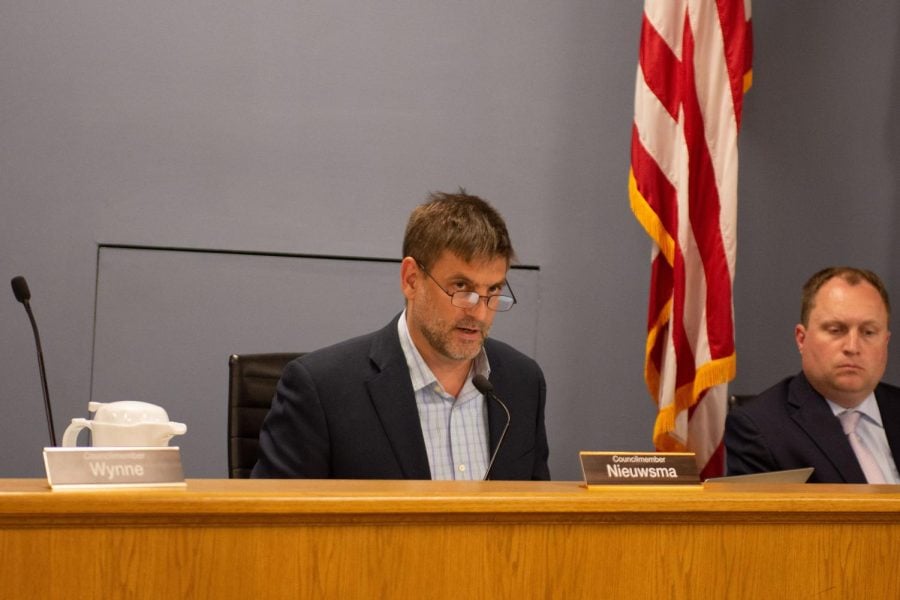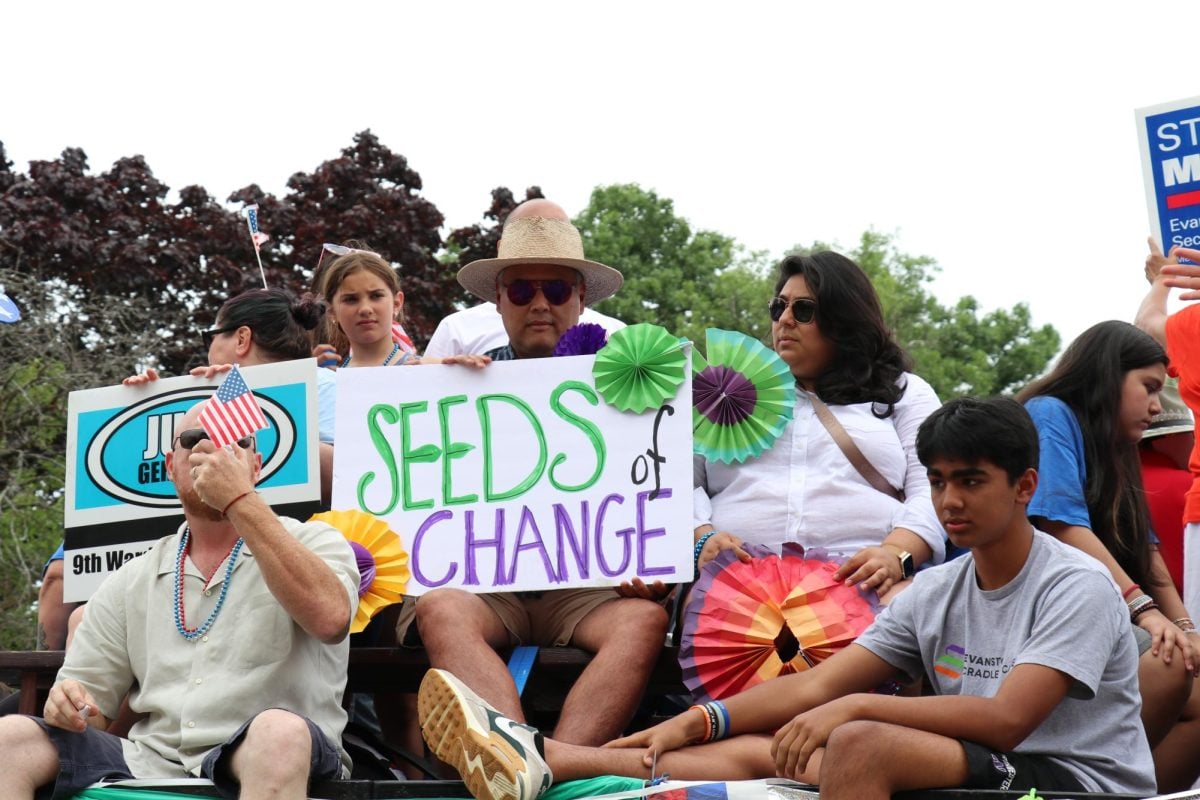Women’s suffrage exhibit highlights 19th Amendment, beyond
January 8, 2020
“Mr. President how long must women wait for liberty” and “Liberty is a woman” appeared in all-caps on signs made 100 years apart.
Suffragists protesting President Woodrow Wilson in 1917 made the first sign, and the other appeared in a march during International Women’s Day in 2017.
Both images feature in “Rightfully Hers,” an exhibit commemorating the 100th anniversary of the 19th Amendment. The exhibit, which also highlights voting history before and beyond 1920, opened on Jan. 2 in the second gallery of the Lorraine H. Morton Civic Center.
The Evanston Women’s History Project requested the pop-up exhibit from the National Archives Museum, according to project director Lori Osborne. The display is one of the events planned by Women’s Vote 100 Evanston, a group of community partners recognizing voting rights throughout the year with EWHP.
“A lot of people have some ideas about the suffrage movement in the United States,” Osborne said. “They may not realize what a real fight it was and how the idea of women’s suffrage, even up until the 19th Amendment passed, was still considered a very radical idea and very controversial.”
The exhibit is one of 1600 pop-up units circulated by the National Archives, according to its website. Osborne said “Rightfully Hers” will move to a new location in Evanston each month at least through August.
Carter Craig, an intern at the city manager’s office, said he appreciated the portable aspect of the display.
Osborne also said the fact it is movable means the national story of women’s suffrage can reach more people.
“Maybe there will be people who make an intentional visit to see it because we’re publicizing,” Osborne said. “The other hope is that the fact it just happens to be there, people will run into it and stop, and find out a little bit more.”
The exhibit has four sides, with two detailing voting rights before the 19th Amendment, another focusing on the 19th Amendment itself, and one about those excluded from voting after the 19th Amendment as well as suffrage work following the ratification.
Evanston resident Charles Loiseau said he often works in the space where the exhibit is located. He paused to look at the exhibit.
“I like the way it tied the past with the present,” Loiseau said. “It was nice showing how black women also were very powerful when it came to the suffrage movement and to women’s right to vote, and they’re still very involved in that.”
Osborne said the exhibit highlights that while the 19th Amendment was significant for American women, it didn’t include everyone. “Rightfully Hers” has information about how women of color were barred from the right to vote and the Voting Rights Act of 1965.
African American women were crucial in the fight for suffrage, especially in Illinois and Evanston, Osborne said. She added that these women often led the movement, and continued to lead as the movement transitioned to the Civil Rights Movement.
Osborne wants people to be interested in the suffrage history of Evanston after reading about the national movement. Next to the exhibit, a stand directs visitors to the EWHP website, which contains information about how women worked locally for voting rights. She also hopes they’ll appreciate their own voting rights.
“That’s what everyone really wants from this anniversary – not just to know this history but to really understand how rare it is and how much work it took to get those rights and how you should use them, that using your vote helps protect it so that it doesn’t disappear, that it’s not guaranteed even today,” Osborne said.
Email: [email protected]
Related stories:
A hundred years after ratification, Frances Willard’s legacy remains vital to the 19th Amendment
Frances Willard House Museum discusses relationship between Willard and Ida B. Wells












